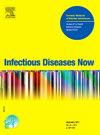德国登革热的健康和经济负担:对法定健康保险索赔数据的回顾性分析。
IF 2.2
4区 医学
Q2 INFECTIOUS DISEASES
引用次数: 0
摘要
背景:登革热是一种主要影响热带和亚热带地区的蚊媒疾病。由于气候变化、白纹伊蚊在欧洲的传播以及全球旅行的增加,人们越来越关注在非登革热流行国家进行登革热诊断和治疗所产生的费用。本研究从法定健康保险(SHI)的角度描述了德国登革热的经济负担。方法:使用匿名SHI索赔数据库进行回顾性数据分析,该数据库占德国SHI人口的11.0%;2015年1月1日至2018年12月31日期间诊断的440例登革热患者使用ICD-10-GM代码进行了识别。倾向评分将病例与对照组相匹配。比较诊断后一年的医疗资源利用和费用。结果:登革热1年行政发病率为1.4 ~ 1.7 / 10万人。病例多为年轻人(50.0 % 18-34 岁),德国西南部城市(69.1 %)(60.7 %)。几乎所有病例都不严重。与对照组相比,登革热患者的医疗资源利用率明显更高,包括住院概率高出3.2倍,门诊次数增加8.2次,病假天数增加9.5天(均p )。结论:在诊断后的一年中,登革热在德国造成了相当大的经济负担。与未患登革热的人相比,登革热病例增加了卫生保健资源利用率、病假天数和卫生保健相关费用。这些发现强调需要有针对性的公共卫生干预措施来减轻登革热的影响。本文章由计算机程序翻译,如有差异,请以英文原文为准。
The health economic burden of dengue in Germany: a retrospective analysis of statutory health insurance claims data
Background
Dengue is a mosquito-borne disease primarily affecting tropical and subtropical regions. Due to climate change, spread of Aedes albopictus into Europe, and increased global travel, concern about dengue’s burden in non-endemic countries has been growing. This study describes the health economic burden of dengue in Germany from the perspective of Statutory Health Insurance (SHI).
Methods
A retrospective data analysis using an anonymized SHI claims database representing 11.0 % of the German SHI population was conducted; 440 dengue patients diagnosed between January 1st, 2015, and December 31st, 2018 were identified using ICD-10-GM codes. Propensity scoring matched cases to controls. Healthcare resource utilization and costs in the year following diagnosis were compared.
Results
One-year administrative incidence rate of dengue ranged from 1.4 to 1.7 per 100,000 individuals. Cases tended to be young (50.0 % were 18–34 years old), urban (69.1 %) individuals from southwestern Germany (60.7 %). Almost all cases were non-severe. Compared to controls, dengue patients had significantly higher healthcare resource utilization, including 3.2 times higher probability of being hospitalized, 8.2 more outpatient visits, and 9.5 additional sick leave days (all p < 0.001). Costs for total healthcare (€769.8), inpatient (€237.3) and outpatient (€368.6) care also increased significantly (all p < 0.001). Inpatient costs accounted for 50.1 % of total costs.
Conclusion
Dengue poses a sizable health economic burden in Germany in the year following diagnosis as it increases healthcare resource utilization, sick leave days, and healthcare-related costs compared to individuals without dengue. The findings highlight the need for targeted public health interventions to mitigate the impact of dengue.
求助全文
通过发布文献求助,成功后即可免费获取论文全文。
去求助
来源期刊

Infectious diseases now
Medicine-Infectious Diseases
CiteScore
7.10
自引率
2.90%
发文量
116
审稿时长
40 days
 求助内容:
求助内容: 应助结果提醒方式:
应助结果提醒方式:


